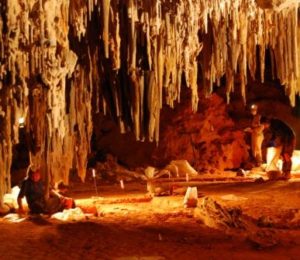
The four-day 14th biennial Conference on Australasian Vertebrate Evolution, Palaeontology and Systematics (CAVEPS 2013) at Flinders University comes to a close tomorrow.
This year’s meeting has been the biggest one ever held in its 26-year history with some 170 delegates from Australia, China, the USA and New Zealand participating.
Organiser of the meeting Associate Professor Gavin Prideaux said CAVEPS 2013 has brought together almost the entire Australian community in vertebrate palaeontology and many esteemed colleagues from around the world to present their latest ground-breaking research.
“The conference has generated new ideas that have the potential to take the discipline forward in exciting new directions,” Associate Professor Prideaux said.
The meeting highlights the 60th anniversary of the inaugural University of California expedition to central Australia – the first of many – led by the legendary palaeontologist Professor Ruben Stirton.
“Those expeditions ushered in a renaissance in Australian palaeontology as many spectacular fossils and a large number of new sites were discovered,” Associate Professor Prideaux said.
“The writing of Australian mammal history really began here.”
Tuesday’s special Stirton Symposium brought together veteran palaeontologists from Australia and the USA to reflect on the scientific impact of these landmark expeditions and recall historical highlights.
Mr Paul Lawson, the 95-year-old former taxidermist and preparator at the South Australian Museum who organised logistics for and took part in the Stirton Expeditions, gave a compelling account of these exciting times in Australian palaeontology.
The conference’s opening keynote address by Museum Victoria’s Dr Tom Rich focused on the events of the inaugural 1953 Stirton expedition.
A group of some 40 conference delegates will head off on Sunday to the Lake Eyre Basin to visit some of the original sites visited by Stirton and his team, spending two days prospecting for Pleistocene vertebrate remains.
Professor John Long, Strategic Professor in Palaeontology at Flinders University, said the conference had also revealed a number of “profound discoveries” – including details of new Australian dinosaurs, theories on how killer marsupial lions moved, the extraction of ancient DNA in extinct Australian megafauna, sex in ancient armoured fishes, and new megafauna footprint sites – that will “change the way we think about vertebrate evolution and the history of the Australian fauna”.

